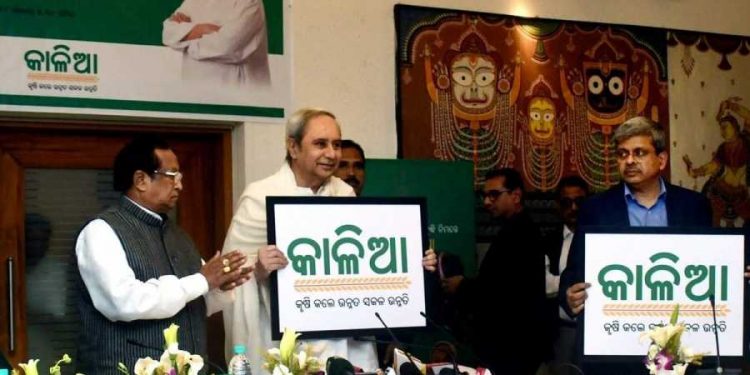The Centre’s scheme does not cover sharecroppers, landless agri labourers
Bhubaneswar: Taking a cue from the farmers’ ire against his government, which was evident when the BJP lost power in three states in the Hindi heartland, the Narendra Modi government has come up with a scheme in line with Odisha government’s KALIA scheme. A detailed analysis of the two farmer-oriented schemes shows that the KALIA scheme is far better than the PM Kisan Yojana.
While presenting the Interim Budget for 2019-20 Friday, Interim Union Finance Minister Piyush Goyal announced the Pradhan Mantri Kisan Samman Nidhi Yojana (PMKSNY) that aims to provide `6,000 cash directly in the accounts of each farmer owing less than five acres across the country.
The Centre has especially announced the scheme in a bid to appease the farmers before the ensuing general elections, as the farming community has been largely disgruntled with the Modi government as was evident in the recently concluded Assembly elections in Rajasthan, Madhya Pradesh and Chhattisgarh.
It seems that the BJD government’s Krushak Assistance for Livelihood and Income Augmentation (KALIA) scheme will largely overshadow the PM Kisan Yojana in Odisha. This is because the ambit of KALIA is much bigger compared to the Central scheme. Besides, the farmers have already started getting the benefits of KALIA, while Centre is yet to initiate the process to execute its scheme.
Under the KALIA scheme, the state is providing `10,000 to every small and marginal farmer in two installments a year, while the Centre has promised to provide `6,000 per year in three instilments to farmers in the same category. Moreover, the state scheme is meant for farmers having up to two hectares.
KALIA also includes landless agricultural households, vulnerable agricultural households, landless agricultural labourers and sharecroppers under different components of the scheme. In all, 50 lakh families will be covered under the state government’s scheme. However, the Central scheme doesn’t have any provision for landless farmers and sharecroppers.
This trend of distributing hard-earned money of the tax payers among the farmers first started in Telengana and is now spreading different parts of the country. The Rythu Bandhu scheme of the Telengana government has helped the KCR government to return to power last year.
As the farmers in Odisha and West Bengal are in distress and were in a protest mode, Odisha Chief Minister Naveen Patnaik and West Bengal Chief Minister Mamata Banerjee also followed the suit. However, the money paid by the Odisha government to the farmers is much higher compared to other states and even the Centre.
Under Rythu Bandhu scheme, KCR government is providing `4,000 per acre per season to support farm investment twice a year for the Rabi and Kharif seasons. The West Bengal government has announced to give an annual financial assistance (cash dole) of `5,000 per acre in two installments – one during the Kharif and another during the Rabi season.
Odisha is distributing `10,000 per farmer per year in two
installments —Rabi and Kharif seasons.






































